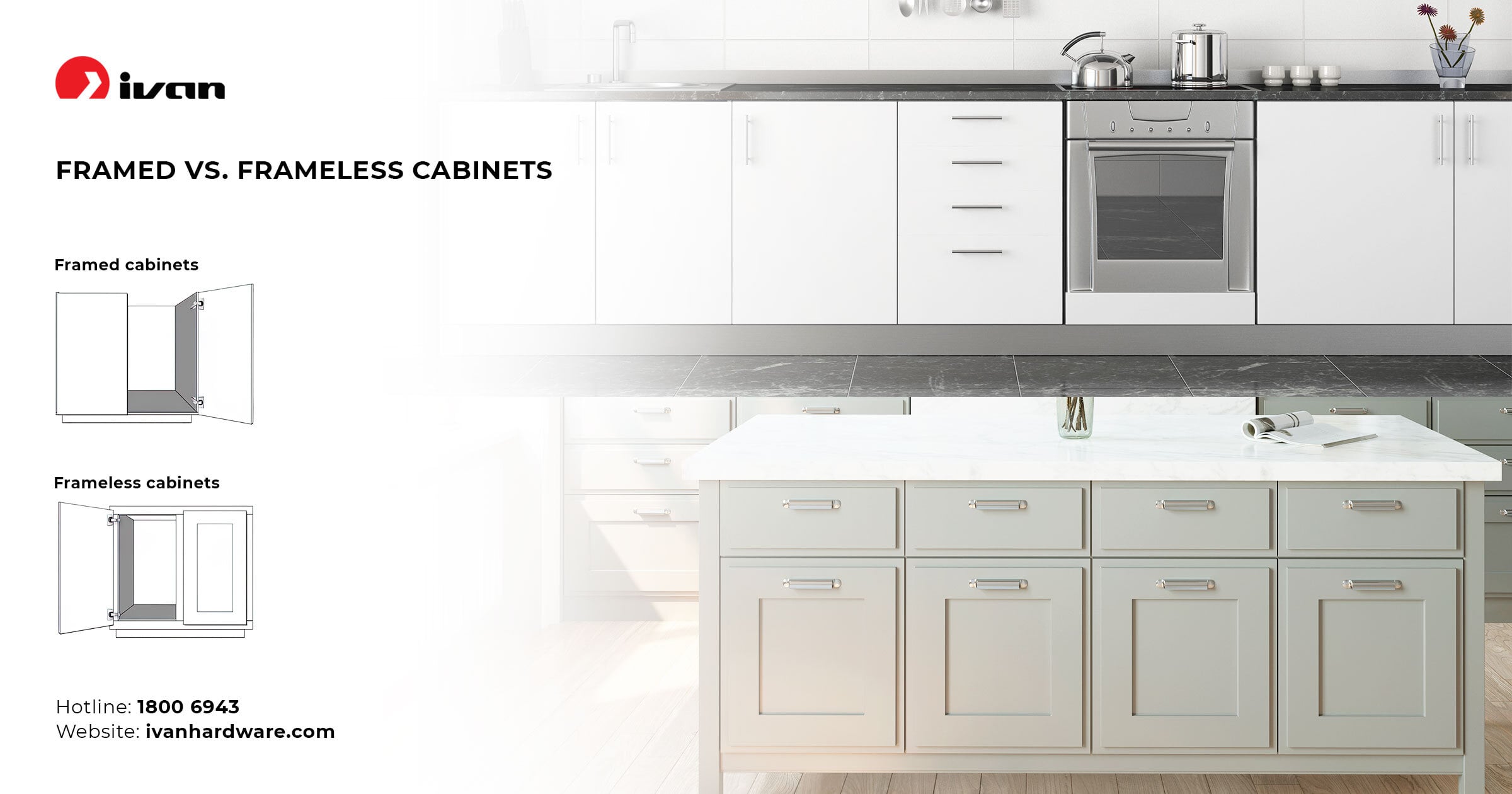When considering cabinet construction methods, cabinetry is divided into two major categories — Framed and Frameless. Let’s explore these two construction methods throught this article.

- Framed Cabinets: This is a more common traditional style cabinet in America. In this type of cabinet construction, the stiles form a 1-1/2 inch face "frame" at the front of the cabinet box, giving added dimension to the door front. In framed cabinetry, the cabinet doors are secured to the frame by hinges, which gives the cabinet strength and sturdiness. Face frames allow for easier installation and door/drawer adjustment. Partial and full overlay, as well as inset cabinet doors, can be used with framed cabinets, giving you many design possibilities for creating a classic, vintage look or a good deal of style flexibility, as framed cabinets can accept an almost infinite variety of door and drawer styles.
- Frameless Cabinets: This style offers a sleeker, modern look that’s popular in Europe. Frameless cabinetry offers full access to the cabinet interior, and larger drawer box capacity by eliminating the face frame. Frameless cabinets with the edges of doors and drawers butted nearly flush provide an elegant, sleek look in a kitchen. Instead, it relies on thicker box construction for stability. The hinges are attached directly to the sides of the cabinet box. Shelves are easy to mount. But it offers less options in sizes and modifications due to the difference or limitation of the construction.
Framed cabinets were once the most popular style of cabinet in the U.S. by far, but recent years have seen frameless cabinets gradually emerge as nearly equal in popularity. A frameless cabinet may be the perfect choice because it offers functional and installation advantages, or can be used in traditional design as well as modern design. Vietnamese cabinet manufacturers nowadays have built cabinets using a frameless construction.